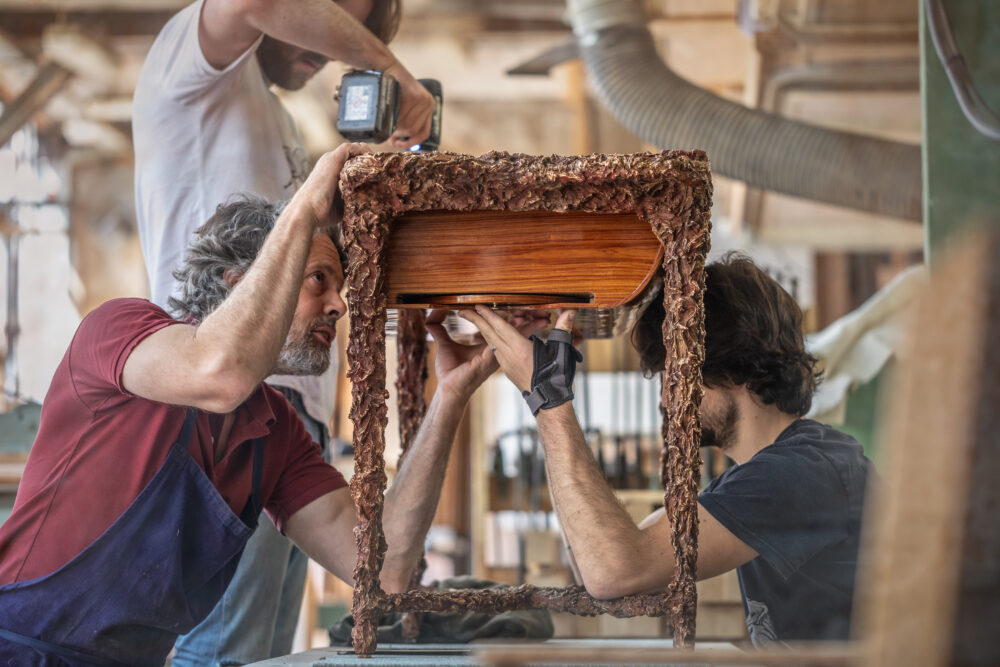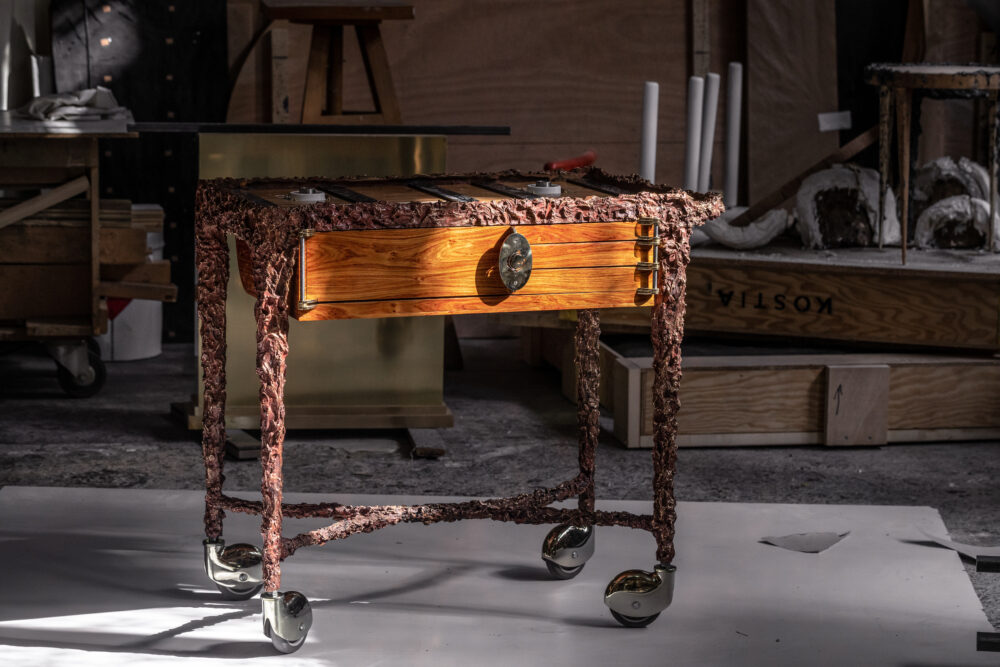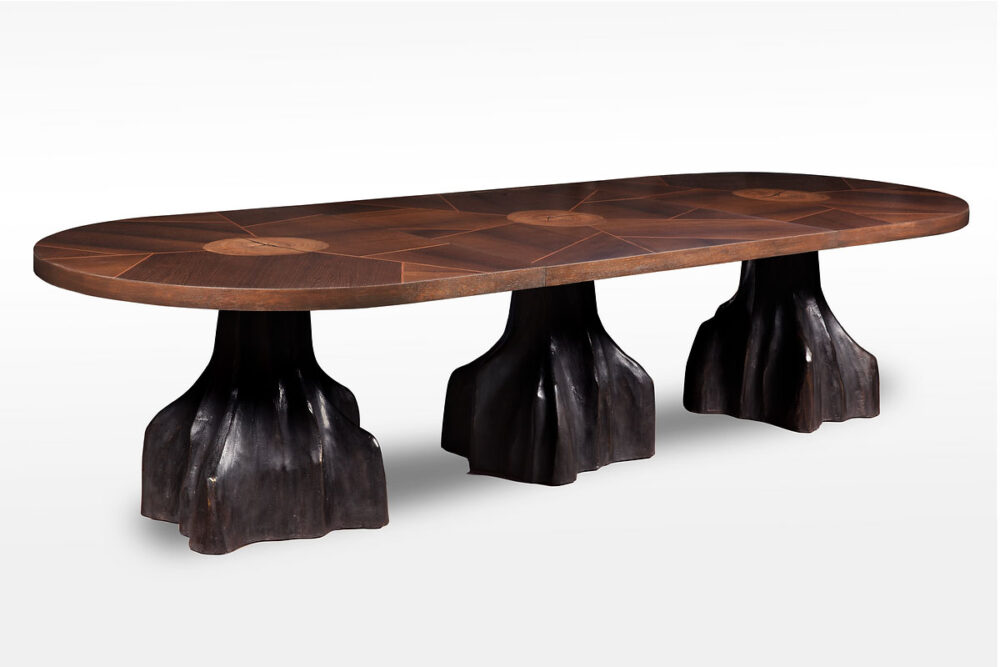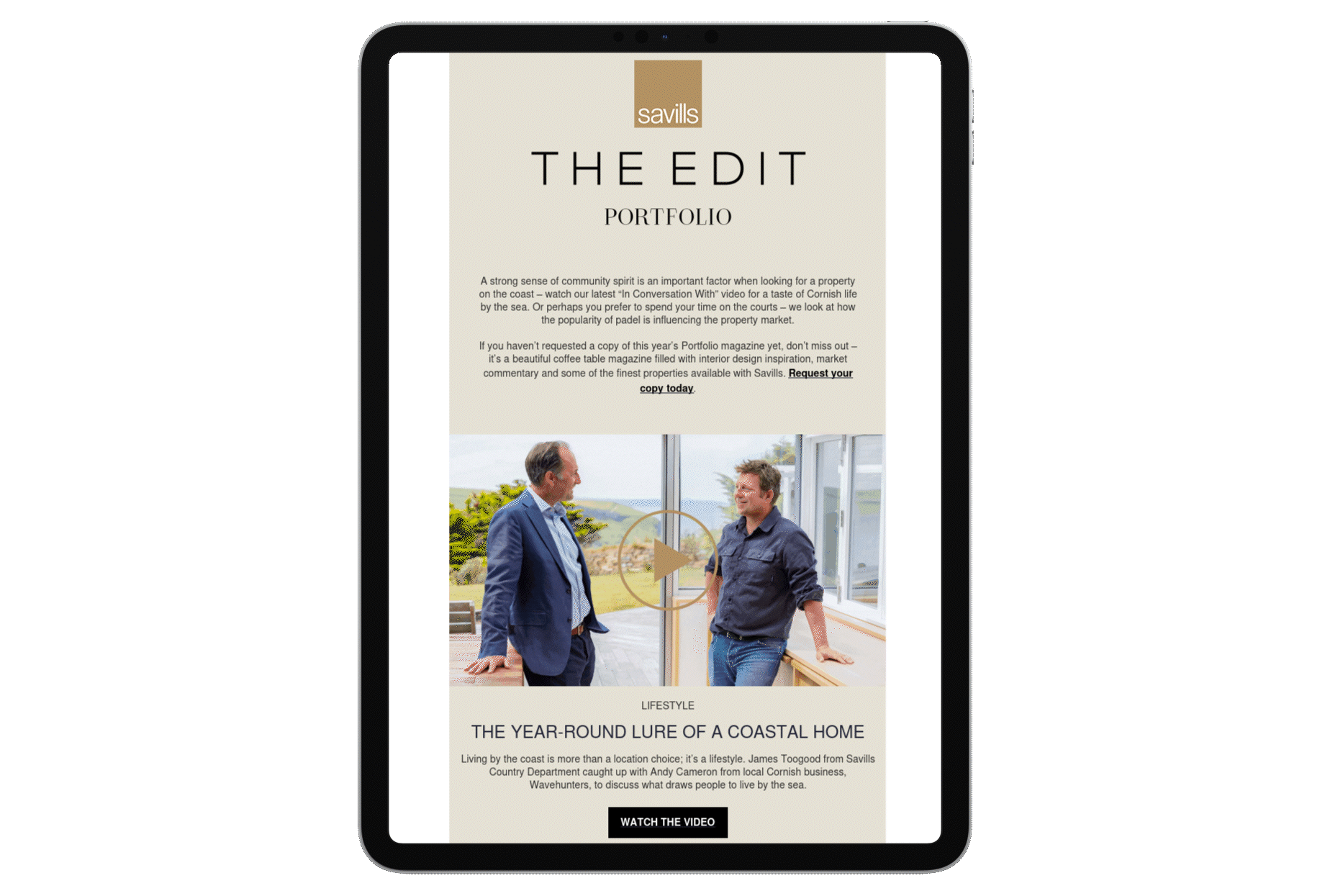We often think of heirloom furniture as something we might inherit. But we can also commission heirlooms for ourselves – and, perhaps inspired by the work on show at fairs such as London Craft Week, PAD Paris and London, Masterpiece and London Design Festival, a growing number of us are choosing to do so. “As traditional craftsmanship has grown in popularity in the past decade, there has been an increased expectation for brands to offer a bespoke service,” says Amy Fletcher, senior trade sales manager at The New Craftsmen, which showcases the work of artists and makers at its store in Mayfair, London.
The relationship between client and artisan should be enjoyable and mutually beneficial – resulting in a unique piece of furniture at the end of the process. For the uninitiated, however, commissioning a bespoke piece can be a daunting task. Finding a maker whose work inspires you and reflects your taste is the best starting point. Once you’ve tracked them down, have a conversation to get a sense of how well you would work together before you commit. The Parisian cabinet-maker Constantin Laan, known as Kostia, says the commissioning process “is all about relationships. A lot of our clients have become friends.”
As in all relationships, communication on both sides is key. “Bespoke commissions are personal, emotional purchases,” says Fletcher. “During the initial inquiry stages we like to ask as many questions as possible, and it’s key to give as much information as you can in return. This helps to determine what it is one truly wants from a piece.” Another important consideration, according to Fletcher, is “to keep an open mind”. By its nature, commissioning bespoke involves asking a maker to create something new. This may require them to work in unfamiliar materials and learn additional techniques, which means there needs to be space – as well as money and time – for creative experimentation.
Kostia notes that when clients give the go-ahead on a project, they generally “have some idea of what they’re going to get, but they don’t have a complete sense… That’s important for us, because it gives us the freedom to adapt.” Kostia, who seeks to create pieces that are both sculptural and practical, is listed on Homo Faber, an excellent online resource for those who want to connect with master craftsmen across Europe – his clients “come for the art”. One example of his commissions is the Swamp Cypress table that he created for an American client living in London, for whom the tree served as a reminder of the landscapes of home. It has “trunks coming out of the floor, like cypresses in a swamp” – a truly bespoke piece with a personal connection to the owner.
Some clients have not just one piece, but all their furniture bespoked, according to Claire Reynolds, co-head of Savills Prime Central London division. “Bespoke furniture is generally commissioned to personalise a home and it’s also great for spatial planning,” she says, “as pieces are made to the exact size required for each room. Often clients will go on to sell a property with the furniture in place. I know of one family who have a bookcase that’s really special to them – they need to find a property that will fit it. It’s a bit like having a wonderful piece of art.”
Sometimes customisation is a more appropriate path than full bespoke. Many artisans are open to creating pieces in a different size, finish or colour that meets a client’s needs and tastes: it is always worth asking. Amy Fletcher cites a spindle-back settee by Bibbings & Hensby, commissioned for a private client in the US who wanted the piece made in an unusual pumpkin colour. “It turned out beautifully,” she says. The London company Basedupon undertakes an almost fanatical level of research to create pieces such as a 60th-birthday desk, designed to “tell a story, create a legacy and define the essence” of its owner. And Mayfair-based Sollands specialises in bold contemporary designs with an unexpected twist.
Whichever path you choose, once your finished piece has been unveiled and takes pride of place in your home, you can bask in the knowledge that, just as your new heirloom will be passed on to future generations, so will the skills and knowledge of our finest craftsmen and women – thanks to your support.
Pictures from top: Kostia in his workshop; putting the finishing touches to a project; the finished piece; another Kostia commission; a settle by The New Craftsmen






